The entire United States of America is rich in wildlife. One of the animals that are found abundantly in the country is frogs, especially tree frogs. The USA is home to a lot of tree frog species. Among all of its states, Kentucky is especially mentionable due to its tree frog diversity.
Tree frogs in Kentucky include Spring Peeper, Bird Voiced tree frog, barking tree frog, green tree frog, etc. These frogs differ in appearance, shape, size, behavior, and diet. Although all of them are classified as tree frogs, their habitat differs from one another as well. People keep some of them as pets, as they are beautiful and unique as pets.
Let’s take a look at what tree frogs you can find in Kentucky.
Which tree frogs can you find in Kentucky?
As far as wildlife goes, Kentucky is one of the richest states in the USA because of its landscapes. The state is especially suited for tree frogs to live since it is full of marshes, and swamps surrounded by trees and bushes. Here are the tree frogs you can find in Kentucky.
1. Spring Peeper (Pseudacris crucifer)
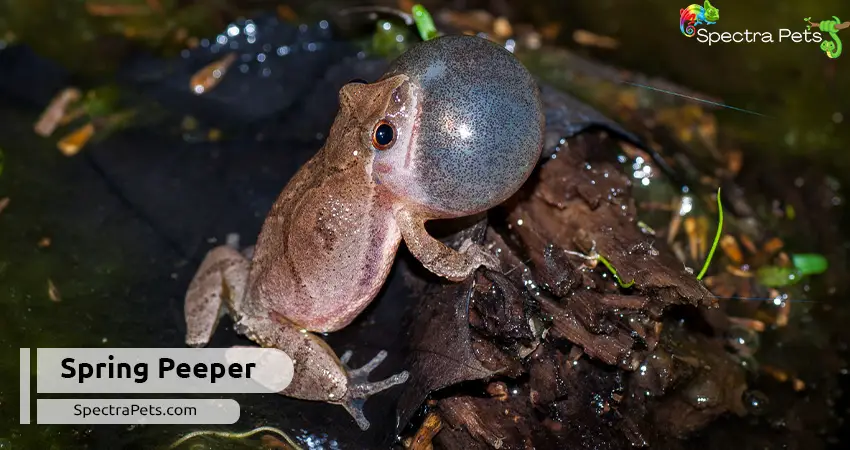
One of the smallest tree frogs found in Kentucky, the Spring peeper is a frog that can be seen all over the state, near the swamps and marshes. Although they are very capable climbers as well. They remain in the water as tadpoles, which last for three months. After these three months, they leave the water and move to the trees.
Spring peepers only grow to about 1.5 inches long. They can be immediately recognized by their ‘peep’, which is a noise they make that resembles the calls of baby birds.
Spring peepers come in a lot of colors, such as brown, gray, olive green, and gray. Females are slightly larger than males. When the breeding time arrives, which is between early spring to June, males make the aforementioned peeping noise to attract females. Females are unable to make this noise.
They lay a clutch of 900 to 1000 eggs after mating. The juveniles live in algae and other smaller organisms present in the water, while adult frogs eat beetles, flies, ants, and spiders.
2. Bird-voiced Treefrog (Dryophytes avivoca)
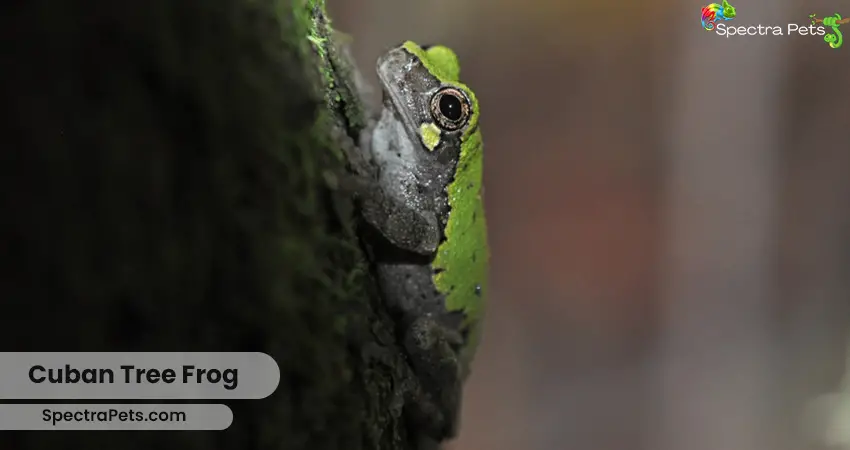
The bird-voiced treefrog gets its name from the sound it makes which closely resembles that of a bird. Other than that, they are very hard to tell apart from Cope’s grey tree frogs. They can be of any color from green to grey and love to live in the wetlands of Kentucky.
These nocturnal frogs mate from mid-April to the end of July. After mating, the females lay a small clutch of eggs at the bottom of a pond. They live on various small insects and invertebrates.
3. Barking Tree frog (Dryophytes gratiosus)
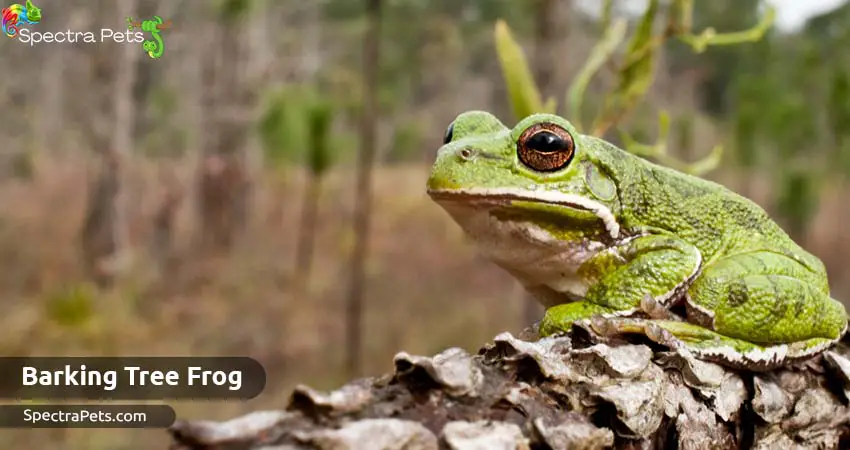
A medium-sized frog at 3 inches in length, the barking tree frog can be found only in the western wetlands of Kentucky. The frog has a beautiful bright green color and is a bit chubbier than most other tree frogs. It is also unique because the area where it loves doesn’t have any trees. So, despite being a tree frog, it can live in the absence of trees.
The calls of this frog closely resemble the barking of dogs, hence it gets its name. When temperatures soar, they get down from trees and burrow under the sand to get away from the scorching sun. They are very hardy and can live in tough, unforgiving conditions.
The breeding season of Barking tree frogs differs according to the state they live in. In the case of Kentucky, this stretches from mid-June to the end of July. Females mate with several mates, who are chosen by their mating calls. She then lays eggs in clutches of between 1500 to 4000 in high grass.
The favorite food of the Barking Tree frogs is crickets. Their diet also includes a whole host of other insects as well.
4. American Green tree frogs (Dryophytes cinereus or Hyla cinerea)
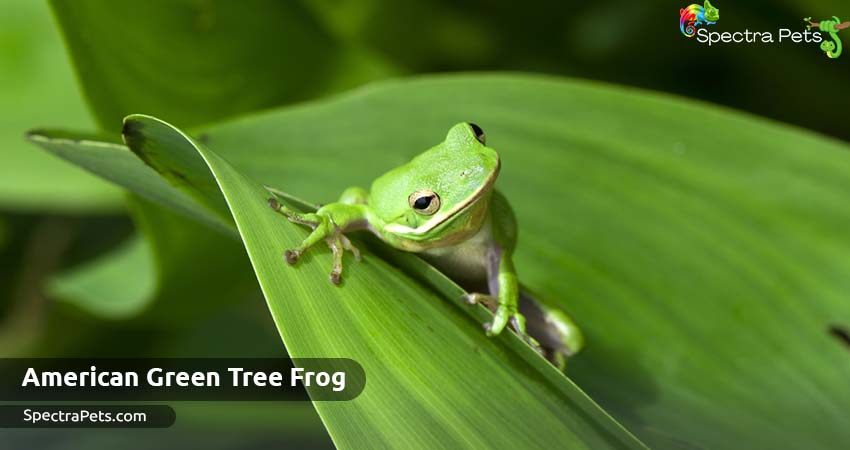
Of the two species of green tree frogs, the American green tree frog is abundant in Kentucky. Having a beautiful green color, these popular frogs can grow up to 2.5 inches in length.
These frogs love water bodies that have a lot of plants and bushes around them. This allows them to soak themselves, breed, and lay eggs in the water while the adults hide among the plants.
American green tree frogs lay more than one clutch of eggs despite mating only once per mating season. Their mating season can last from March to September. Males mate with multiple females to spread their seed. The clutches have around 400 eggs in them, which hatch after a couple of weeks.
Not all males make a mating sound to attract females. Some males, termed satellite males, keep silent and mate with a female which has been attracted by a nearby male’s mating calls. The males that do make sounds, use a whole variety of vocalizations to attract potential mates.
The diet of American Tree frogs includes various insects such as crickets, flies, ants, etc. These frogs are a very popular choice for pets because of their bright color and hardiness.
5. Gray tree frog (Dryophytes versicolor)
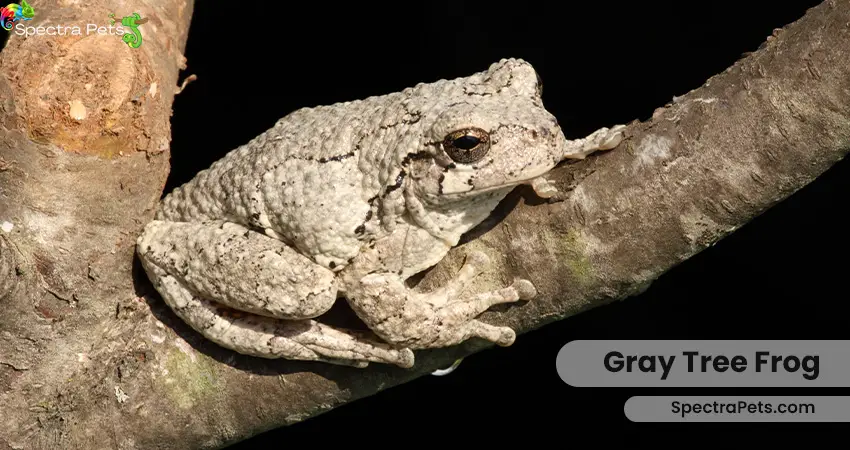
The gray tree frog is abundant in Kentucky but is extremely hard to find. The reason behind this is its ability to change its color according to its environment to camouflage itself. The frog’s color varies from green to molted brown, depending on its habitat and mood.
Gray tree frogs mate from late April to the beginning of August. During mating, their calls are often confused with other males, so they change their calls to discourage other males from approaching. Once they have mated, female Gray Tree frogs lay eggs in packets of 40 eggs on surrounding vegetation.
The gray tree frogs are versatile when it comes to their habitat. They can live in a lot of places such as swamps, woods, forests, and marshes. Their diet includes insects, insect larvae, mites, lice, spiders, snails, etc. They also make very good pets.
6. Cope’s Gray Tree Frog (Dryophytes chrysoscelis)
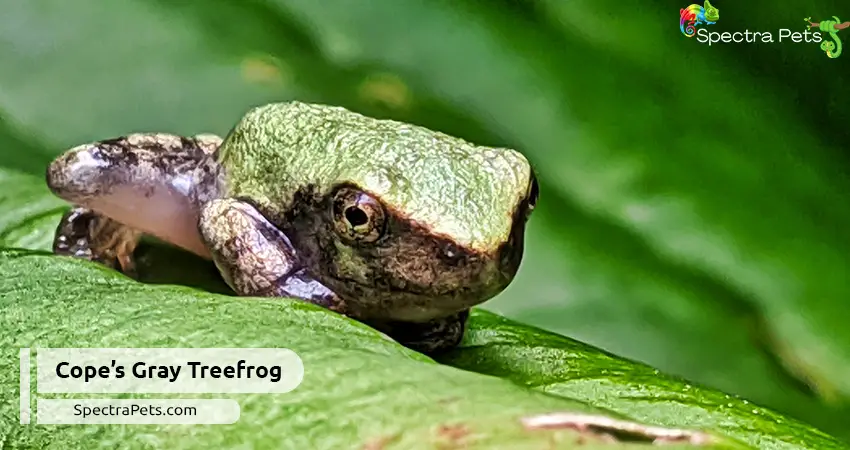
Very closely resembling Bird-voiced Tree frogs, the Cope’s Tree frog is green, gray, or brown with yellow patches in its hind limbs. Their breeding season lasts from May to August. They attract females by making incredibly loud noises that can reach 90 dB.
After mating, females lay around 2000 eggs in groups of 40. These eggs hatch within 4 to 5 days. The Cope’s Gray Tree frog is an insectivore, which eats moths, crickets, flies, ants, beetles, grasshoppers, etc.
Importance of tree frogs in Kentucky
Tree frogs are very important for the environment of the state of Kentucky. The importance of tree frogs is given below:
- They keep the ecological balance: Tree frogs play a very significant role in keeping the ecological balance in Kentucky. Not only do they eat harmful insects and worms which damage crops and plants, but they also are one of the most common foods of birds, snakes, etc. As a result, snakes and birds are well fed and the ecological balance is well-kept.
- They ensure harmful insects don’t get out of control: Eating harmful insects doesn’t only help keep the ecological balance, but it also ensures the crops and other plants of the state don’t get damaged by them.
- They act as indicators: Tree frogs have thin skins which can easily be damaged by the toxins and other various pollutants present in the environment. So, once a tree frog is seen to be suffering from various skin diseases and dying off, it’s an indicator that the environment is polluted.
Final Words
There are many tree frogs in Kentucky, which are extremely important to the ecology of the state. But due to habitat destruction and pollution, their numbers are coming under considerable threat. The state government should take a look at this and ensure we don’t lose these precious species from our state.
Tree Frogs Found In the Adjacent States To Kentucky:
